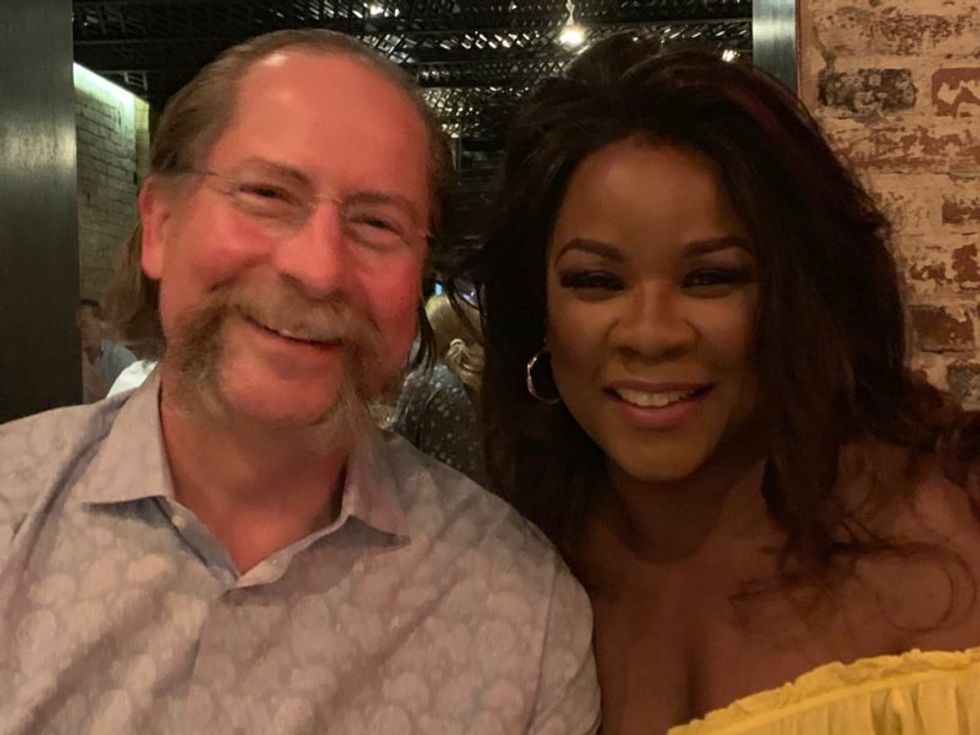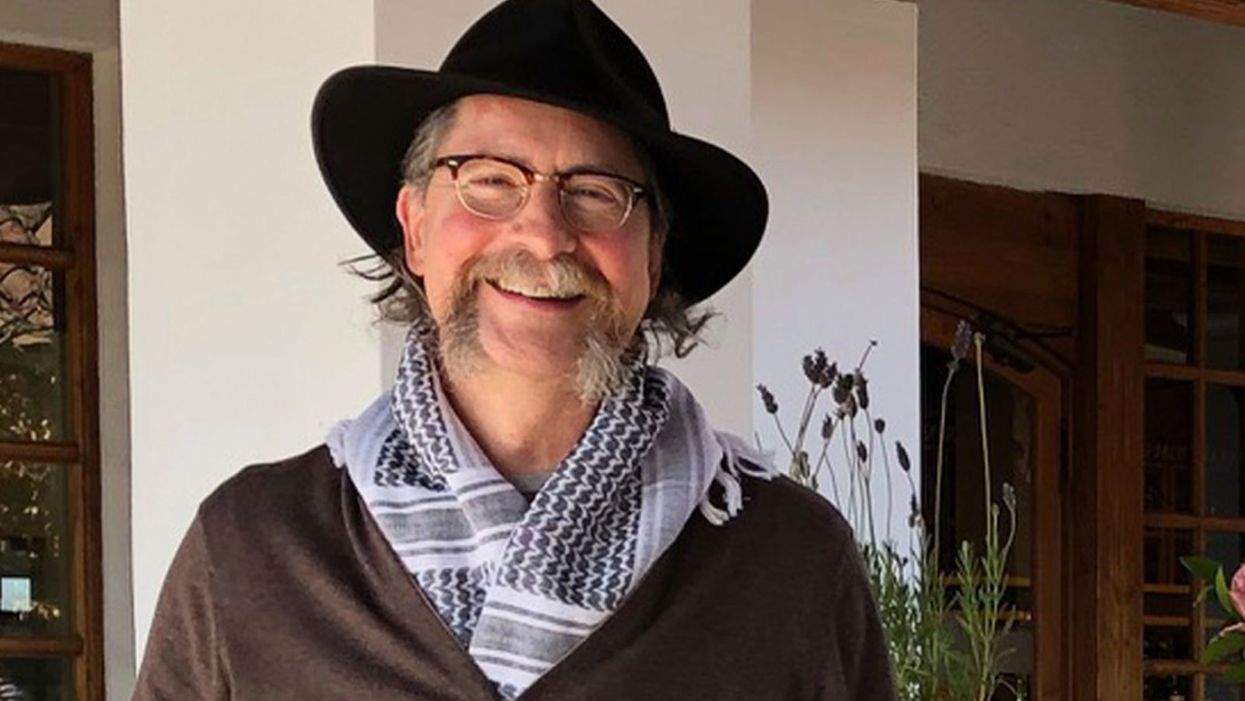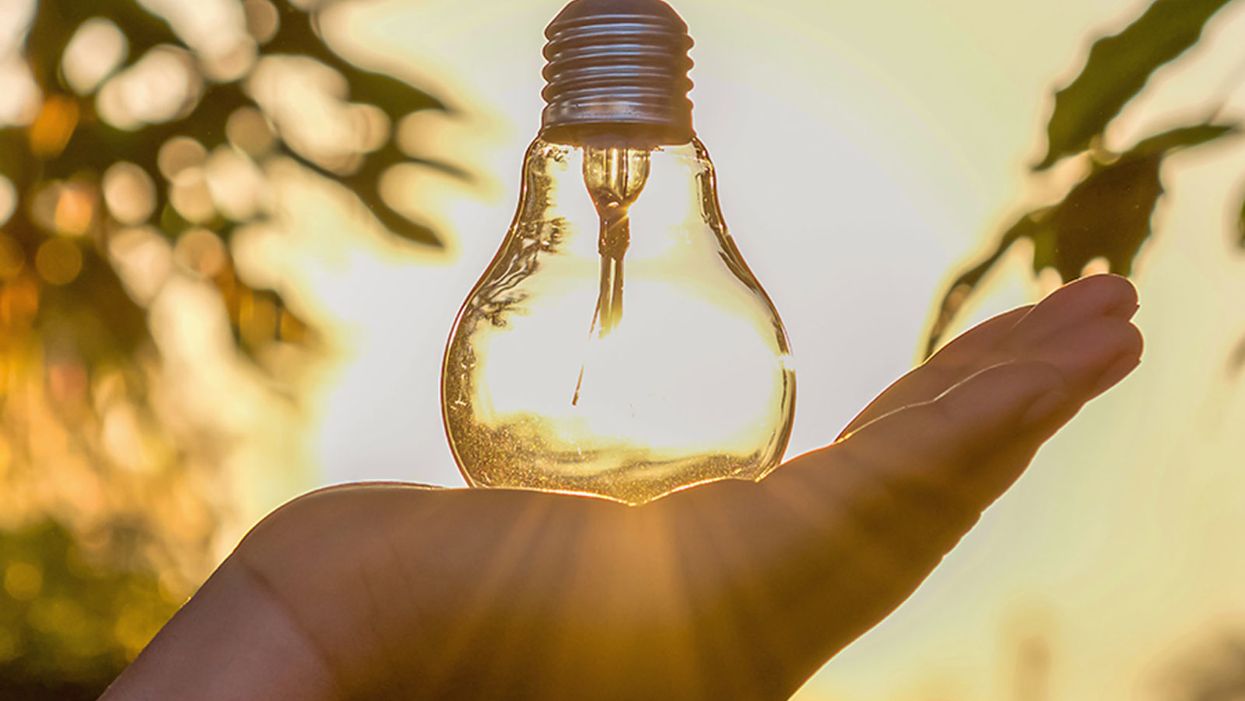Who Qualifies as an “Expert” And How Can We Decide Who Is Trustworthy?

Discerning a real expert from a charlatan is crucial during the COVID-19 pandemic and beyond.
This article is part of the magazine, "The Future of Science In America: The Election Issue," co-published by LeapsMag, the Aspen Institute Science & Society Program, and GOOD.
Expertise is a slippery concept. Who has it, who claims it, and who attributes or yields it to whom is a culturally specific, sociological process. During the COVID-19 pandemic, we have witnessed a remarkable emergence of legitimate and not-so-legitimate scientists publicly claiming or being attributed to have academic expertise in precisely my field: infectious disease epidemiology. From any vantage point, it is clear that charlatans abound out there, garnering TV coverage and hundreds of thousands of Twitter followers based on loud opinions despite flimsy credentials. What is more interesting as an insider is the gradient of expertise beyond these obvious fakers.
A person's expertise is not a fixed attribute; it is a hierarchical trait defined relative to others. Despite my protestations, I am the go-to expert on every aspect of the pandemic to my family. To a reporter, I might do my best to answer a question about the immune response to SARS-CoV-2, noting that I'm not an immunologist. Among other academic scientists, my expertise is more well-defined as a subfield of epidemiology, and within that as a particular area within infectious disease epidemiology. There's a fractal quality to it; as you zoom in on a particular subject, a differentiation of expertise emerges among scientists who, from farther out, appear to be interchangeable.
We all have our scientific domain and are less knowledgeable outside it, of course, and we are often asked to comment on a broad range of topics. But many scientists without a track record in the field have become favorites among university administrators, senior faculty in unrelated fields, policymakers, and science journalists, using institutional prestige or social connections to promote themselves. This phenomenon leads to a distorted representation of science—and of academic scientists—in the public realm.
Trustworthy experts will direct you to others in their field who know more about particular topics, and will tend to be honest about what is and what isn't "in their lane."
Predictably, white male voices have been disproportionately amplified, and men are certainly over-represented in the category of those who use their connections to inappropriately claim expertise. Generally speaking, we are missing women, racial minorities, and global perspectives. This is not only important because it misrepresents who scientists are and reinforces outdated stereotypes that place white men in the Global North at the top of a credibility hierarchy. It also matters because it can promote bad science, and it passes over scientists who can lend nuance to the scientific discourse and give global perspectives on this quintessentially global crisis.
Also at work, in my opinion, are two biases within academia: the conflation of institutional prestige with individual expertise, and the bizarre hierarchy among scientists that attributes greater credibility to those in quantitative fields like physics. Regardless of mathematical expertise or institutional affiliation, lack of experience working with epidemiological data can lead to over-confidence in the deceptively simple mathematical models that we use to understand epidemics, as well as the inappropriate use of uncertain data to inform them. Prominent and vocal scientists from different quantitative fields have misapplied the methods of infectious disease epidemiology during the COVID-19 pandemic so far, creating enormous confusion among policymakers and the public. Early forecasts that predicted the epidemic would be over by now, for example, led to a sense that epidemiological models were all unreliable.
Meanwhile, legitimate scientific uncertainties and differences of opinion, as well as fundamentally different epidemic dynamics arising in diverse global contexts and in different demographic groups, appear in the press as an indistinguishable part of this general chaos. This leads many people to question whether the field has anything worthwhile to contribute, and muddies the facts about COVID-19 policies for reducing transmission that most experts agree on, like wearing masks and avoiding large indoor gatherings.
So how do we distinguish an expert from a charlatan? I believe a willingness to say "I don't know" and to openly describe uncertainties, nuances, and limitations of science are all good signs. Thoughtful engagement with questions and new ideas is also an indication of expertise, as opposed to arrogant bluster or a bullish insistence on a particular policy strategy regardless of context (which is almost always an attempt to hide a lack of depth of understanding). Trustworthy experts will direct you to others in their field who know more about particular topics, and will tend to be honest about what is and what isn't "in their lane." For example, some expertise is quite specific to a given subfield: epidemiologists who study non-infectious conditions or nutrition, for example, use different methods from those of infectious disease experts, because they generally don't need to account for the exponential growth that is inherent to a contagion process.
Academic scientists have a specific, technical contribution to make in containing the COVID-19 pandemic and in communicating research findings as they emerge. But the liminal space between scientists and the public is subject to the same undercurrents of sexism, racism, and opportunism that society and the academy have always suffered from. Although none of the proxies for expertise described above are fool-proof, they are at least indicative of integrity and humility—two traits the world is in dire need of at this moment in history.
[Editor's Note: To read other articles in this special magazine issue, visit the beautifully designed e-reader version.]
The Stunning Comeback of a Top Transplant Surgeon Who Got a New Heart at His Own Hospital
Dr. Robert Montgomery, almost one year post-transplant, at a vineyard in Casablanca, Chile, August 2019.
Having spent my working life as a transplant surgeon, it is the ultimate irony that I have now become a heart transplant patient. I knew this was a possibility since 1987, when I was 27 years old and I received a phone call from my sister-in-law telling me that my 35-year-old brother, Rich, had just died suddenly while water skiing.
Living from one heartbeat to the next I knew I had to get it right and nail my life—and in that regard my disease was a blessing.
After his autopsy, dots were connected and it was clear that the mysterious heart disease my father had died from when I was 15 years old was genetic. I was evaluated and it was clear that I too had inherited cardiomyopathy, a progressive weakening condition of the heart muscle that often leads to dangerous rhythm disturbances and sudden death. My doctors urged me to have a newly developed device called an implantable cardioverter-defibrillator (ICD) surgically placed in my abdomen and chest to monitor and shock my heart back into normal rhythm should I have a sudden cardiac arrest.
They also told me I was the first surgeon in the world to undergo an ICD implant and that having one of these devices would not be compatible with the life of a surgeon and I should change careers to something less rigorous. With the support of a mentor and armed with what the British refer to as my "bloody-mindedness," I refused to give up this dream of becoming a transplant surgeon. I completed my surgical training and embarked on my career.
What followed were periods of stability punctuated by near-death experiences. I had a family, was productive in my work, and got on with life, knowing that this was a fragile situation that could turn on its head in a moment. In a way, it made my decisions about how to spend my time and focus my efforts more deliberate and purposeful. Living from one heartbeat to the next I knew I had to get it right and nail my life—and in that regard my disease was a blessing.
In 2017 while pursuing my passion for the outdoors in a remote part of Patagonia, I collapsed from bacterial pneumonia and sepsis. Unknowingly, I had brought in my lungs one of those super-bugs that you read about from the hospital where I worked. Several days into the trip, the bacteria entered my blood stream and brought me as close to death as a human can get.
I lay for nearly 3 weeks in a coma on a stretcher in a tiny hospital in Argentina, septic and in cardiogenic shock before stabilizing enough to be evaced to NYU Langone Hospital, where I was on staff. I awoke helpless, unable to walk, talk, or swallow food or drink. It was a long shot but I managed to recover completely from this episode; after 3 months, I returned to work and the operating room. My heart rebounded, but never back to where it had been.
Then, on the eve of my mother's funeral, I arrested while watching a Broadway show, and this time my ICD failed to revive me. There was prolonged CPR that broke my ribs and spine and a final shock that recaptured my heart. It was literally a show stopper and I awoke to a standing ovation from the New York theatre audience who were stunned by my modern recreation of the biblical story of Lazarus, or for the more hip among them, my real-life rendition of the resurrection of Jon Snow at the end of season 5 of Game of Thrones.
Against the advice of my doctors, I attended my mom's funeral and again tried to regain some sense of normalcy. We discussed a transplant at this point but, believe it or not, there is such a scarcity of organs I was not yet "sick enough" to get enough priority to receive a heart. I had more surgery to supercharge my ICD so it would be more likely to save my life the next time -- and there would be a next time, I knew.
As a transplant surgeon, I have been involved in some important innovations to expand the number of organs available for transplantation.
Months later in Matera, Italy, where I was attending a medical meeting, I developed what is referred to as ventricular tachycardia storm. I had 4 cardiac arrests over a 3-hour period. With the first one, I fell on to a stone floor and split my forehead open. When I arrived at the small hospital it seemed like Patagonia all over again. One of the first people I met was a Catholic priest who gave me the Last Rights.
I knew now was the moment and so with the help of one of my colleagues who was at the meeting with me and the compassion of the Italian doctors who supplied my friend with resuscitation medications and left my IV in place, I signed out of the hospital against medical advice and boarded a commercial flight back to New York. I was admitted to the NYU intensive care unit and received a heart transplant 3 weeks later.
Now, what I haven't said is that as a transplant surgeon, I have been involved in some important innovations to expand the number of organs available for transplantation. I came to NYU in 2016 to start a new Transplant Institute which included inaugurating a heart transplant program. We hired heart transplant surgeons, cardiologists, and put together a team that unbeknownst to me at the time, would save my life a year later.
It gets even more interesting. One of the innovations that I had been involved in from its inception in the 1990s was using organs from donors at risk for transmitting viruses like HIV and Hepatitis C (Hep C). We popularized new ways to detect these viruses in donors and ensure that the risk was minimized as much as possible so patients in need of a life-saving transplant could utilize these organs.
When the opioid crisis hit hard about four years ago, there were suddenly a lot of potential donors who were IV drug users and 25 percent of them were known to be infected with Hep C (which is spread by needles). In 2018, 49,000 people died in the U.S. from drug overdoses. There were many more donors with Hep C than potential recipients who had previously been exposed to Hep C, and so more than half of these otherwise perfectly good organs were being discarded. At the same time, a new class of drugs was being tested that could cure Hep C.
I was at Johns Hopkins at the time and our team developed a protocol for using these Hep C positive organs for Hep C negative recipients who were willing to take them, even knowing that they were likely to become infected with the virus. We would then treat them after the transplant with this new class of drugs and in all likelihood, cure them. I brought this protocol with me to NYU.
When my own time came, I accepted a Hep C heart from a donor who overdosed on heroin. I became infected with Hep C and it was then eliminated from my body with 2 months of anti-viral therapy. All along this unlikely journey, I was seemingly making decisions that would converge upon that moment in time when I would arise to catch the heart that was meant for me.

Dr. Montgomery with his wife Denyce Graves, September 2019.
(Courtesy Montgomery)
Today, I am almost exactly one year post-transplant, back to work, operating, traveling, enjoying the outdoors, and giving lectures. My heart disease is gone; gone when my heart was removed. Gone also is my ICD. I am no longer at risk for a sudden cardiac death. I traded all that for the life of a transplant patient, which has its own set of challenges, but I clearly traded up. It is cliché, I know, but I enjoy every moment of every day. It is a miracle I am still here.
Scientists Just Created Liquid Solar Power That Can Be Stored for 18 Years
A team of Swedish scientists has gathered solar power so pure, that until recently, capturing it was an impossibility.
Look no further than this week's climate strikes for evidence that millions of people are passionate about curbing global warming.
Unlike relatively limited solar panel energy storage, norbornadiene can potentially maintain its potency for years.
But even potential solutions, like alternative meats, have their own challenges. Some scientists are putting their focus on the sun to help balance out our energy consumption.
In fact, they are gathering solar power so pure that, until recently, capturing it was an impossibility.
The Lowdown
A group of Swedish scientists has created a liquid called norbornadiene. This liquid sunshine can capture up to 30 percent of raw solar power. To put it in perspective, the best publicly available solar panels can harness 21 percent. Norbornadiene would bring in about 50 percent more power – a significant difference in energy efficiency.
Most notably, unlike relatively limited solar panel energy storage, norbornadiene can potentially maintain its potency for years. We could have the ability to collect and store premium solar power, making it easier for current and future generations to use fossil and nuclear fuel alternatives.
"The norbornadiene molecules that we have made have very good properties, in terms of solar energy capture efficiency, storage time and energy density," says team lead Dr. Kasper Moth-Poulson of the Chamlers University of Technology. "They can store energy without the need for insulation materials for 18 or more years."
Next Up
Swedish scientist Moth-Poulsen and his team have been testing the norbornadiene on the physics building roof at the Chalmers University of Technology. Once activated, it heats up to just below boiling and provides enough power to be useful.
The energy density is 250 watt-hours per kilogram, twice the strength of Tesla's popular Powerall battery.
It requires potentially toxic solvents, like a cobalt-based activator, to transform into its full potential. The team is currently trying to find less-hazardous catalysts to help transform the norbornadiene to its active form, quadricyclane. Exposing it to sunlight is the main way to reactivate the norbornadiene's power. Over time, scientists will likely make it more efficient with less toxic agents.
The energy density is 250 watt-hours per kilogram, twice the strength of Tesla's popular Powerall battery.
Open Questions
The biggest question is safety, perceived or otherwise: Are you ready to drive around with 250 kWh of pure solar in your Hyundai? Norbornadiene may be stable in a hermetically sealed lab, but sculpting it for everyday use requires another level of security.
The half-life of the sunshine power is also an estimate, too. The challenge with new scientific substances is you don't know how the matter will evolve over time. It is easy to be overly optimistic about this one discovery being the key to our energy needs. For the time being, it is wiser to look at norbornadiene as a progressive step rather than a revolutionary one.
Even at its least effective, norbornadiene and its related material is a step toward us utilizing the one natural resource that won't run out for generations. In the short-term, a stable form of it could offset our fossil and nuclear fuel use and even help lower the carbon footprint made by long-distance transportation. It will be fascinating to see what future aircraft builders, home designers and even car manufacturers do as the solar technology conversation heats up.
Moth-Poulsen wants norbornadiene to be a definitive part of the climate change puzzle.
"I hope that in five years, we will see the first products based on our molecules and could help mitigate the daily variations in temperature," he says. "This will lead to increased thermal comfort and reduced energy consumption for heating and cooling."

